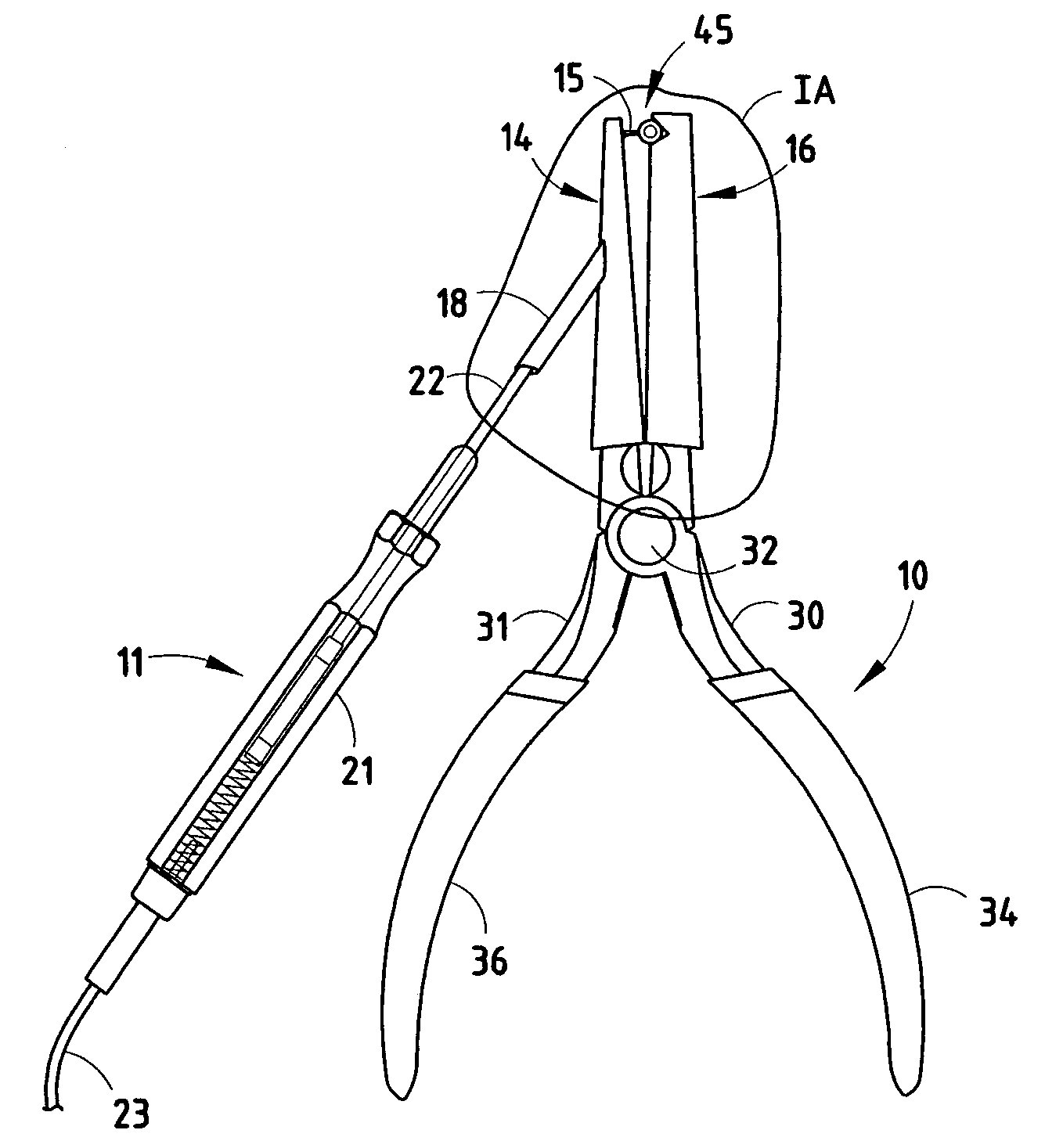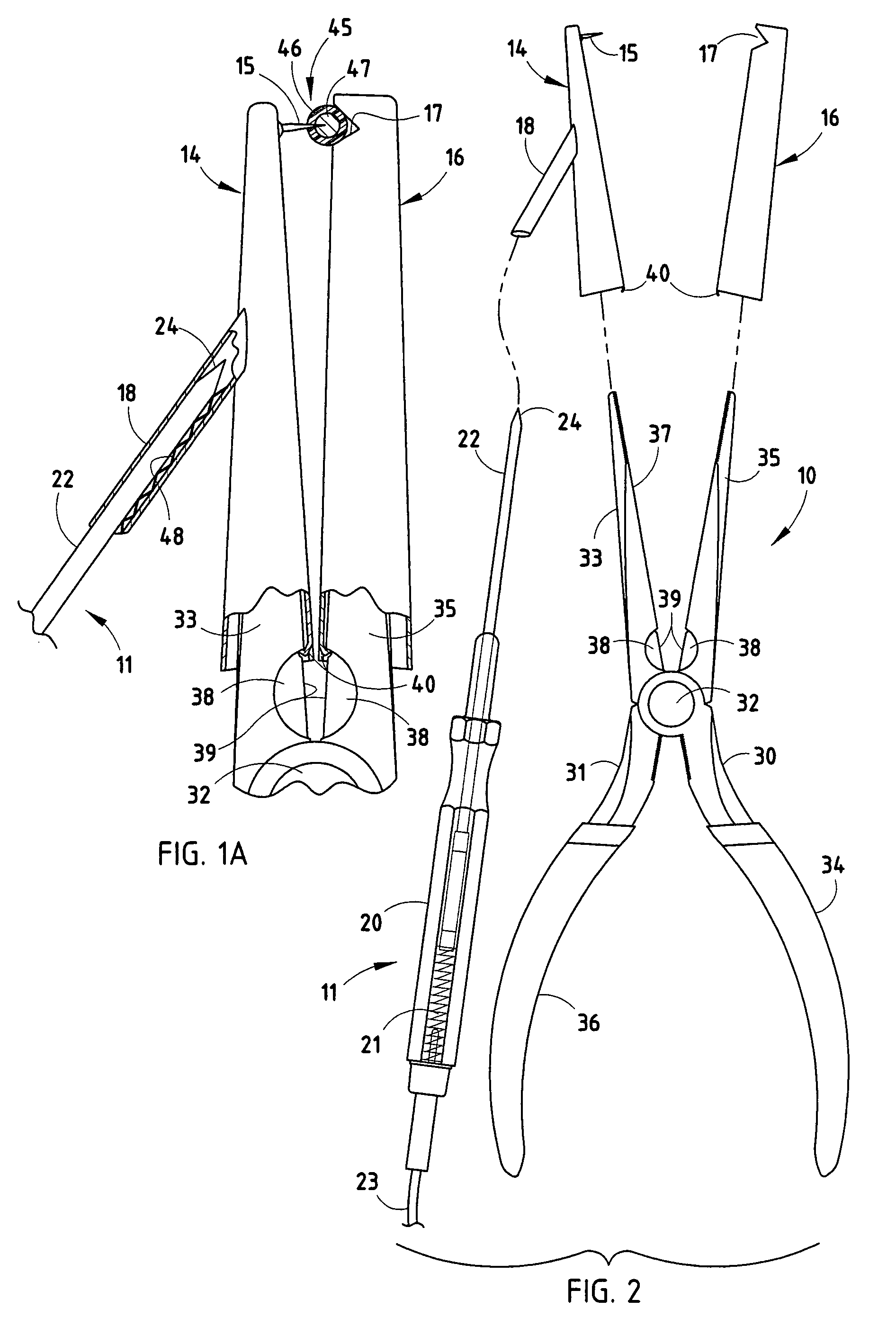Continuity tester apparatus for wiring
a technology of continuous testing and wiring, which is applied in the direction of instruments, line-transmission details, measurement instrument housings, etc., can solve the problems of inconvenient use, inconvenient maintenance, and inability to test the equipment required for such testing,
- Summary
- Abstract
- Description
- Claims
- Application Information
AI Technical Summary
Problems solved by technology
Method used
Image
Examples
Embodiment Construction
[0016] A kit (FIGS. 1-2) is provided for making a continuity tester from an existing pliers tool 10 and an existing continuity tester 11 (also called a “continuity checker” herein) to check electrical continuity of a wire 45. The kit includes a first sleeve 14 adapted to slip onto a free end of the first jaw and which includes a protrusion 15 that faces laterally, and a second sleeve 16 adapted to slip onto the second jaw and which includes a pocket 17 for holding the wire 45 while the protrusion is piercing the insulating cover 46 of the wire 45 and making contact with the conductor 47 inside the wire 45. The first and second sleeves 14 and 16 are tubular, and are held on by resilient tabs that frictionally engage the jaws. A tubular universal connector 18 adapted to receive and frictionally engage the probe of the continuity checker is provided either on the first sleeve 14 (or alternatively is provided on a third sleeve engageable with the first handle of the pliers tool 10 (see ...
PUM
 Login to View More
Login to View More Abstract
Description
Claims
Application Information
 Login to View More
Login to View More - R&D
- Intellectual Property
- Life Sciences
- Materials
- Tech Scout
- Unparalleled Data Quality
- Higher Quality Content
- 60% Fewer Hallucinations
Browse by: Latest US Patents, China's latest patents, Technical Efficacy Thesaurus, Application Domain, Technology Topic, Popular Technical Reports.
© 2025 PatSnap. All rights reserved.Legal|Privacy policy|Modern Slavery Act Transparency Statement|Sitemap|About US| Contact US: help@patsnap.com



